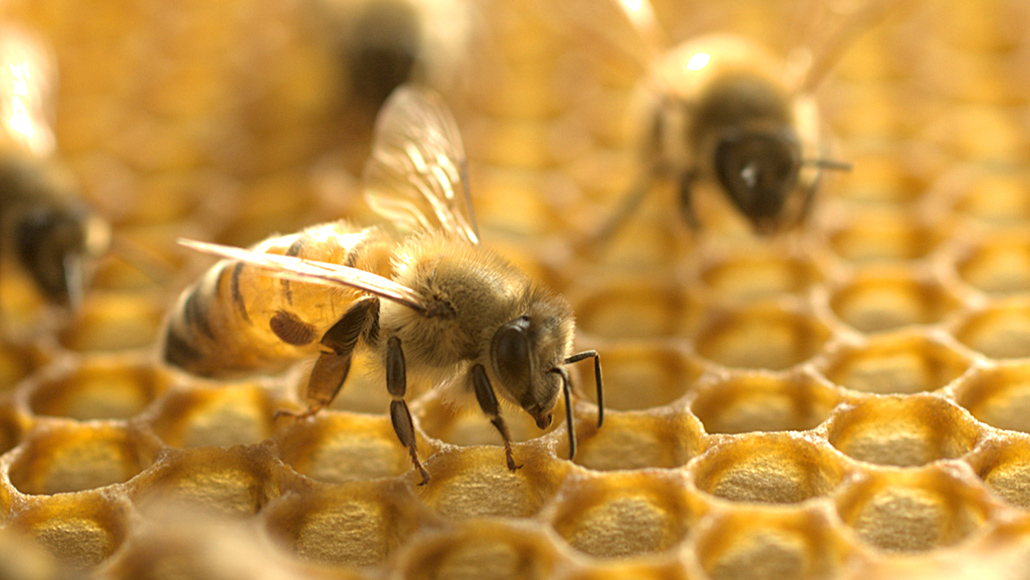Engineered honeybee gut bacteria trick attackers into self-destructing
Special microbes mount steady gene-silencing attacks on mites or viruses

A test of genetic sabotage offers new hope for fighting one of the biggest dangers to honeybee health, the small, disease-spreading, fat-sucking Varroa mite (seen clamped on the side of the nearest bee).
Heather Broccard-Bell/iStock/Getty Images Plus